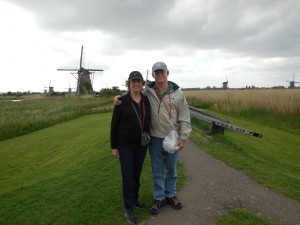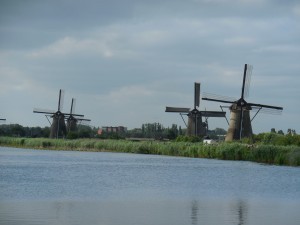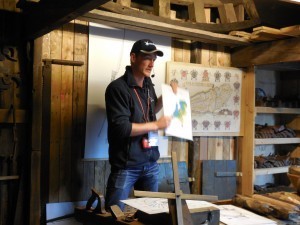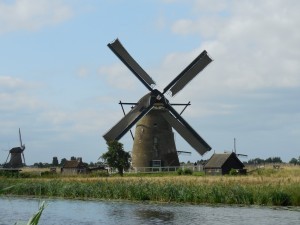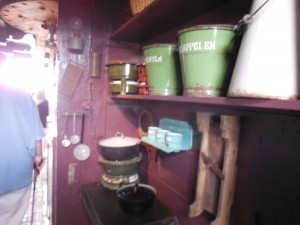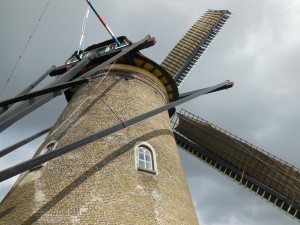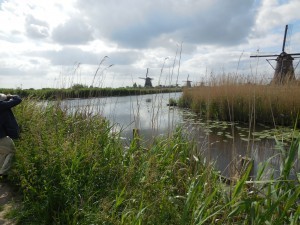RHINE MYSTERY #1 — SOLVED!
Susan Vaughan here, just returned from a cruise up the Rhine River from Amsterdam to Basel.
History and geography buffs and those more traveled than I may already know the facts behind the mystery in my title, but many like me may not. Most of the old windmills are gone, but not in Kinderdiik, our first stop upriver from Amsterdam, a UN World Heritage site, which boasts several windmills dating from the late 18th century. We stepped off the ship’s gangplank and up onto the dike to see this view of the many windmills preserved here.
The excursion was led by a local guide, Daniel, a mechanical engineering student at a nearby university. In the workshop, he showed us the tools used to maintain the mills’ works and described how a mill works.
Yes, ladies, Daniel is a hottie—and very knowledgeable and entertaining. Our destination was the windmill that’s now a museum. Notice one sail has a canvas cover, better to catch a light wind.
A family with thirteen children occupied it last, many years ago before electricity and other modern conveniences. All those people in a few cramped rooms, and only the parents’ bedroom/sitting room had heat, a wood stove. Tiny, tiny living space. My husband climbed the steep stairs to the cramped children’s bedroom, but I had the camera. Here’s my picture of the warming pan for reheating meals, which were cooked in a small shed outside.
From the ground, the miller can control the direction of the sails to catch the wind constantly sweeping across this flat land. Looking upward at the turning sails gave me a sense of that wind power.
And my mystery: what were the windmills for?
When I think of windmills, I think of the wind powering a mill to grind wheat into flour or corn into meal. Not so in the North Holland province of the Netherlands, where the Rhine flows via a delta into the North Sea. Tides surge up the Rhine and across the delta. Big tides like here in Maine. The soil is fertile, so ancient people settled there, but it’s tough to grow crops when the fields flood twice a day—every day. Windmills, canals, and dikes were created to control the flow of the Rhine.
In the 1700’s windmills powered pumps that moved the water from the fields into canals and reservoirs. These incredibly inventive solutions to the flooding problem were phased out, and today massive pumping stations are powered by electric and diesel engines.
Next month another mystery. Care to guess what?
*** My newest releases are the Task Force Eagle trilogy and Primal Obsession. You can find excerpts and buy links at www.susanvaughan.com.
Lea Wait's Blog
- Lea Wait's profile
- 506 followers


